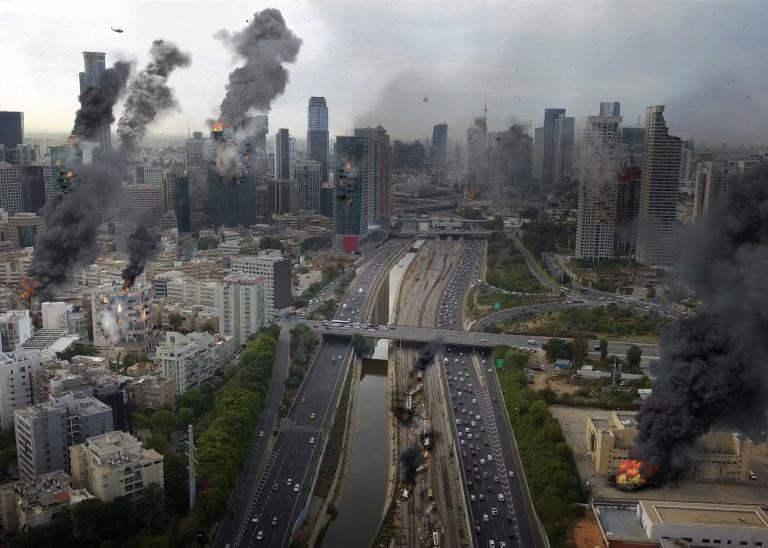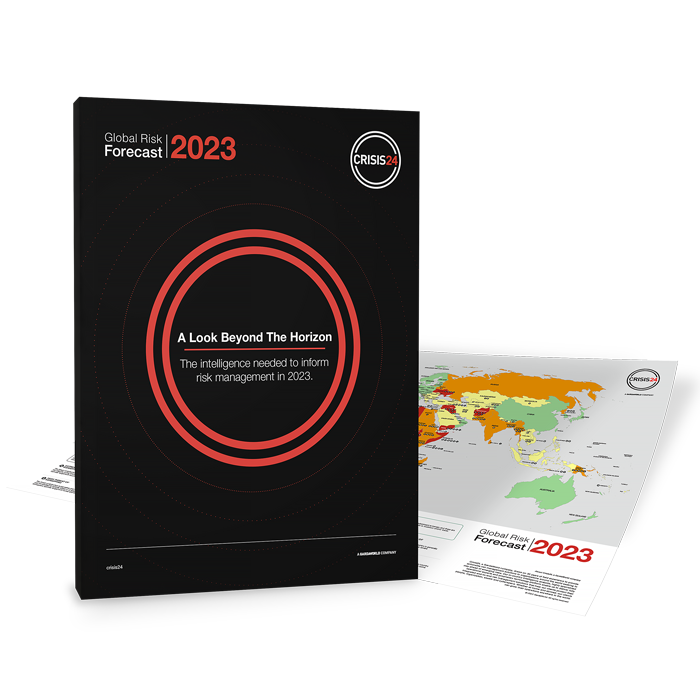12 Oct 2021 | 01:21 AM UTC
Pacific Ocean: Tropical Storm Pamela intensifying in Pacific Ocean Oct. 11; landfall forecast near Mazatlan, Sinaloa State, Oct. 13 /update 1
Tropical Storm Pamela strengthening in Pacific Ocean Oct. 11; landfall forecast near Mazatlan, Sinaloa State, Mexico, Oct. 13.
Event
Tropical Storm Pamela is rapidly strengthening in the Pacific Ocean Oct. 11. As of 18:00 MDT, the storm's center of circulation was approximately 660 km (410 miles) south-southwest of Mazatlan, Sinaloa State, Mexico. Forecast models indicate the system will strengthen over the coming days as it turns northeastward before making landfall as a Category 3 hurricane near Mazatlan, Sinaloa State, Oct. 13. Pamela will then rapidly weaken as it tracks northeastward across parts of Mexico's Durango and Coahuila states, transitioning into a post-tropical cyclone with tropical depression strength winds by early Oct. 14. The system is then forecast to dissipate over Texas, U.S., Oct. 14. The storm's track and intensity forecast remain somewhat uncertain, and the system may change accordingly over the coming days.
Government Advisories
As of 18:00 MDT, the following advisories are in effect:
Hurricane Warning: Bahia Tempehuaya to Escuinapa
Tropical Storm Warning: north of Bahia Tempehuaya to Altata; south of Escuinapa to Cabo Corrientes; Isla Marias
Tropical Storm Watch: Los Barilles to Cabo San Lucas
Hazardous Conditions
Heavy rainfall associated with Pamela is forecast to affect parts of Mexico's pacific coast and northern states, including Sinaloa, western Durango, and southern Baja California Sur states Oct. 12-13. Pamela is forecast to produce 10-20 cm (4-8 inches) of rainfall in Sinaloa and western Durango states through Oct. 14, possibly resulting in flash flooding and landslides; 5-10 cm (2-4 inches) of rainfall is likely in southern parts of Baja California Sur State over the same period.
Heavy rainfall totaling 5-10 cm (2-4 inches) will also likely affect parts of central Texas and southeastern Oklahoma, U.S., from late Oct. 13 through Oct. 14, possibly resulting in flash flooding, including in urban areas. Sustained heavy rainfall could especially trigger flooding in low-lying communities near streams, creeks, rivers, and urban areas with easily overwhelmed stormwater drainage systems. Sites located downstream of large reservoirs could experience flash flooding after relatively short periods of intense rainfall.
Fairly arid areas may also be subject to inundation where hard, dry soil cannot absorb rainfall. Rain-induced landslides are possible in steeply sloped terrains; surface runoff in desert locations and along old bushfire burn scars could also result in dangerous mudslides. Flooding could isolate some communities for several days.
Prolonged swells and storm surge generated by the system will likely result in coastal flooding as the storm approaches land. Storm-related swells will likely begin to affect parts of the southern Baja California peninsula as well as southwestern and west-central mainland Mexico by late Oct. 12, causing life-threatening surf. Persistent onshore flow could make it difficult for the surge to recede and for water levels to decrease in coastal river catchments.
Pamela will likely produce damaging hurricane-force wind gusts in the Hurricane Warning area by late Oct. 12 or early Oct. 13. Strong wind gusts of up to 220 kph (140 mph) cannot be ruled out, especially in areas of Sinaloa State close to where landfall is forecast. Widespread and prolonged power outages due to uprooted trees and toppled utility lines are possible in affected areas.
Transport
Inclement weather associated with the storm could trigger localized business, transport, and utility disruptions. Floodwaters and debris flows could render some bridges or roadways impassable, impacting overland travel in and around affected areas. Areal flooding in urban locations could also result in severe traffic congestion, while strong winds will pose a hazard to high-profile vehicles. Heavy rain and low visibility may trigger flight disruptions at regional airports.
Disruptions triggered by inclement weather and resultant hazards, such as flooding, could persist well after weather conditions have improved. If there is severe damage to infrastructure, repair or reconstruction efforts may exacerbate residual disruptions.
Health
Stagnant pools of water during and after flooding increase the incidence of insect- and waterborne diseases, such as dengue fever and cholera. The threat of these disease outbreaks is usually elevated in low-income or underdeveloped areas of major urban centers due to the presence of incomplete or open sewer lines. The latent threat of waterborne contaminants from inundated industrial sites cannot be discounted; exposure to raw sewage and other hazardous materials mixed with floodwaters poses a serious health threat.
Advice
Activate contingency plans in areas where officials forecast tropical storm and hurricane conditions. Heed any evacuation orders that may be issued. Use extreme caution in low-lying coastal areas and near streams, creeks, and other waterways due to the potential for severe flooding and storm surge.
Stockpile water, batteries, and other essentials in advance. Charge battery-powered devices when electricity is available; restrict the use of cellular phones to emergencies only. Power down mobile devices when not in use. Keep important documents and necessary medications in waterproof containers. Observe strict food and water precautions, as municipalities could issue boil-water advisories following flooding events. Take precautions against insect- and waterborne diseases in the coming weeks.
Plan accordingly for protracted commercial, transport, and logistics disruptions in areas in the path of the storm, especially if vital infrastructure is damaged. Seek updated information on road conditions before driving or routing shipments through areas where flooding has occurred. Confirm flights before checking out of hotels or driving to the airport; clearing passenger backlogs may take several days in some locations.
Resources
US National Hurricane Center
Mexican Meteorological Service (Spanish)


